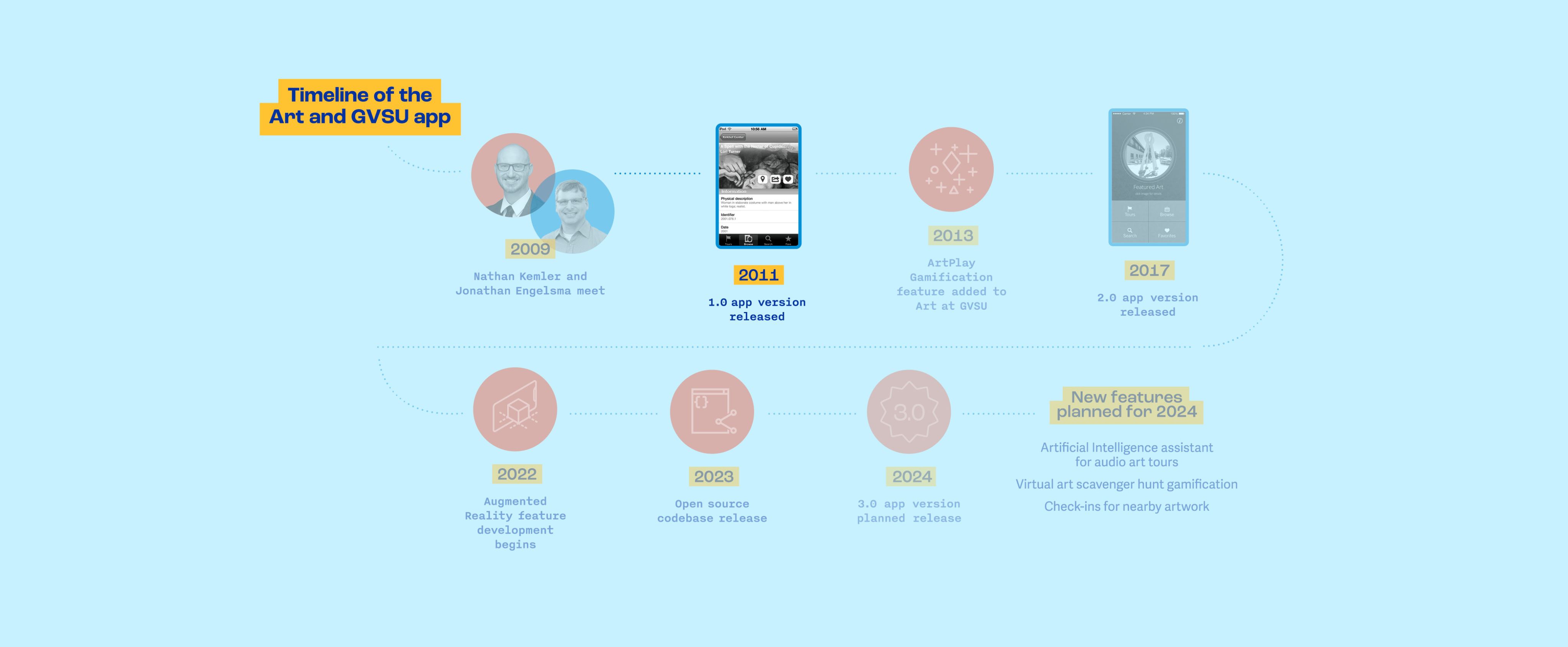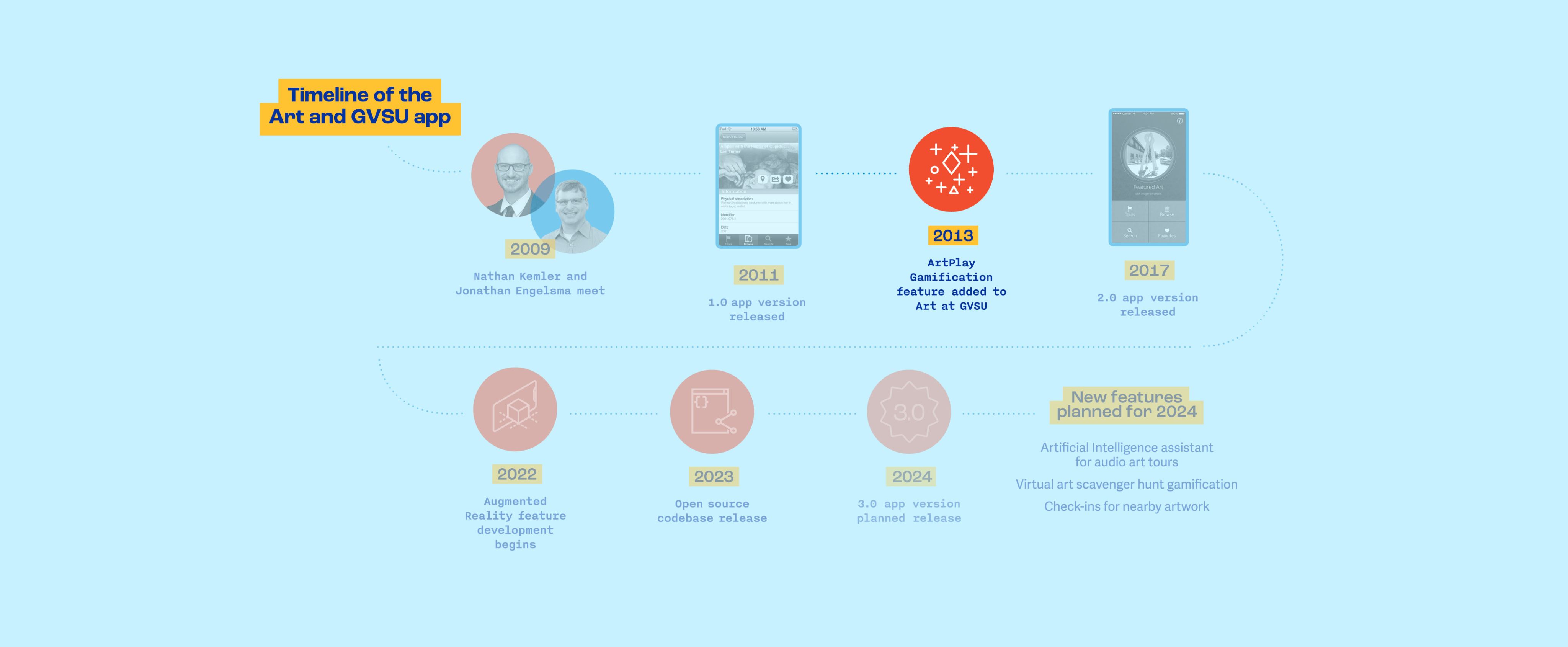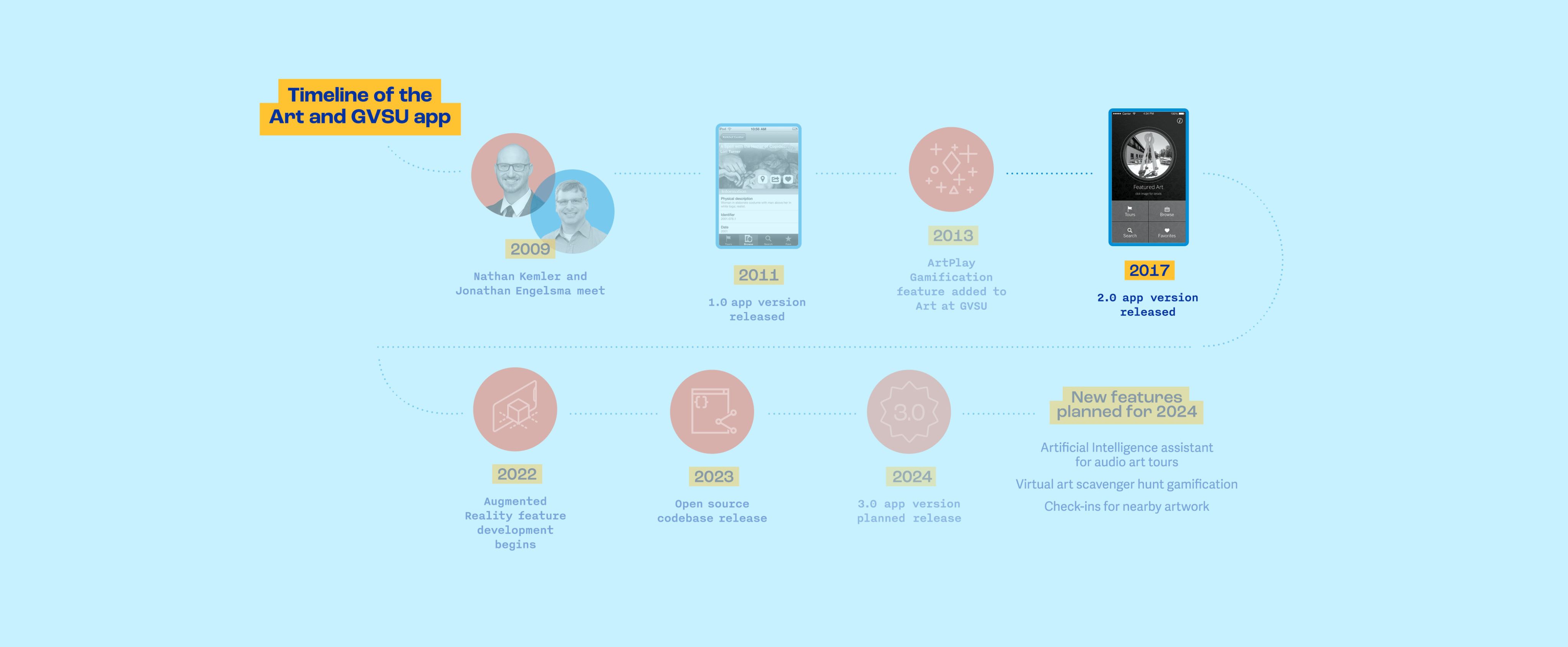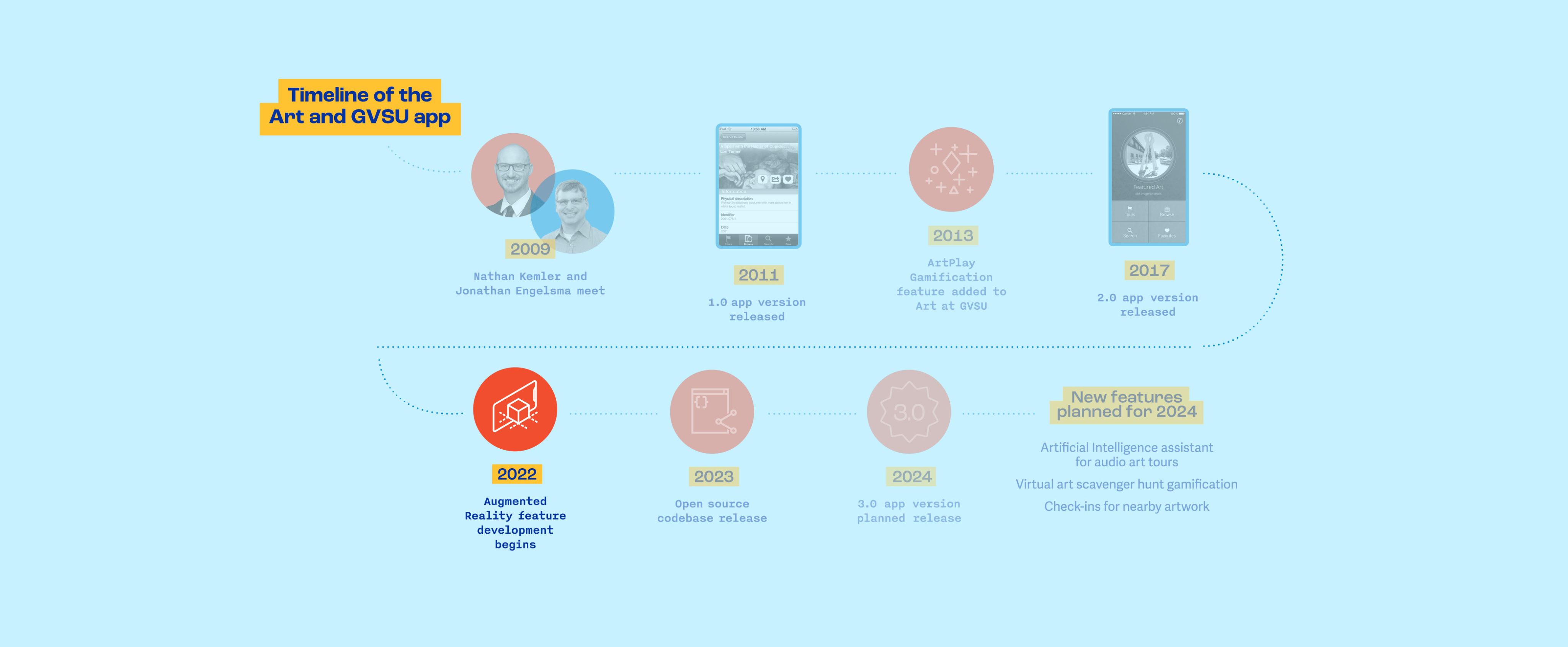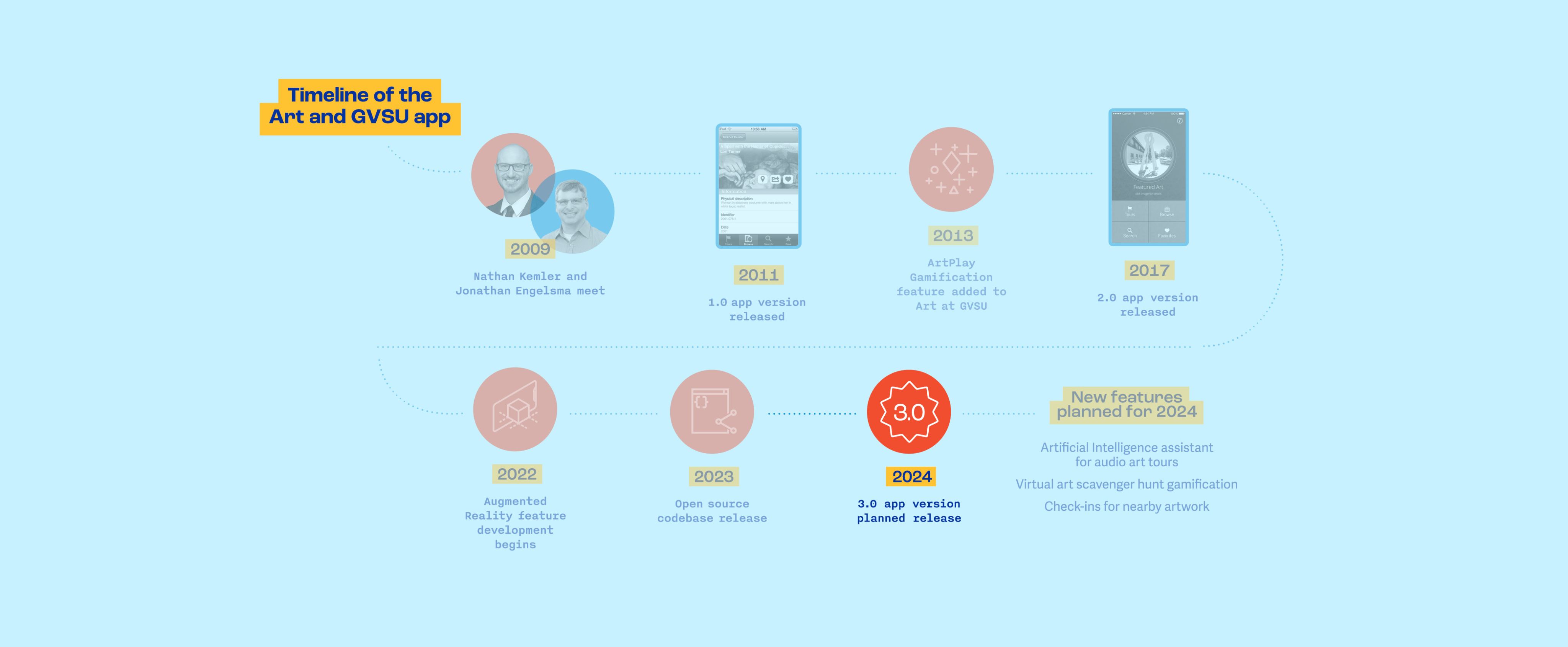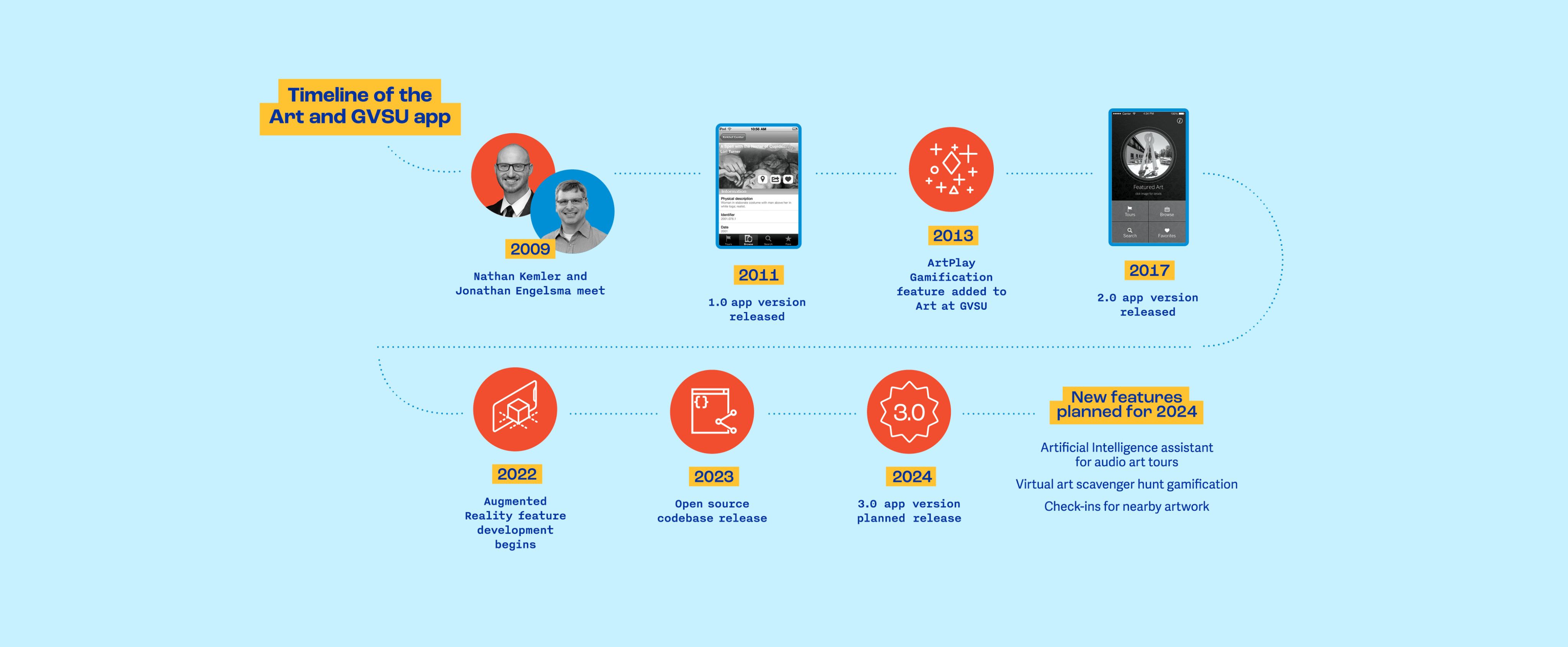ARTS
Mobile Art
An app for art and advances

ARTS
Mobile Art
An app for art and advances
STORY BY PEG WEST
The Art at GVSU app’s two recent important releases — open source and augmented reality features — continues a cutting-edge approach to viewing GVSU’s robust art collection.
At the heart of these advances is an unexpected pairing of GVSU experts who connected by chance and then proceeded to steer this mobile technology over the past 15 years with significant student input.
The core relationship has been between Nathan Kemler, GVSU director of Galleries and Collections, and Jonathan Engelsma, professor of computing and director of GVSU’s Applied Computing Institute. And it only takes spending a few minutes with them to see how a mutual vision and a natural rapport have propelled this technology forward.
“Nathan is a fine director of the art collection, but that’s a masquerade — he’s a really savvy tech guy,” said Engelsma, adding that since he arrived at GVSU in 2009, “I don’t remember a time being at Grand Valley and not hanging out with Nathan.”
Engelsma and Kemler connected through Henry Matthews, the inaugural director of Galleries and Collections. Kemler had been working to digitalize GVSU’s art collection and was looking for new avenues to engage with the artwork.
“The mobile technology in 2009 was very different than it is today, but we knew this was the way to go, knowing that all of our students were going to have a mobile device,” Kemler said. “And we knew with the way Grand Valley’s art collection is distributed around campus, having an ability to get on demand the information you need through mobile technology was the solution.”
What has ensued since the app was released in 2011 is a collaboration that fosters a steady refinement of the app, periodic milestone advances and, importantly, the distinctive Grand Valley hallmark of student involvement, benefiting both the product and the learning experience.
“This collaboration wasn’t planned, yet the outcome is very rich for our students and community,” said Engelsma, who said the nature of this project is an example of the aspirational goals of the university’s Blue Dot ecosystem.
One of the more recent releases has been an augmented reality feature, which helps enhance engagement with artwork through use of innovative technology to animate works, provide supplemental information and more,
Kemler said.


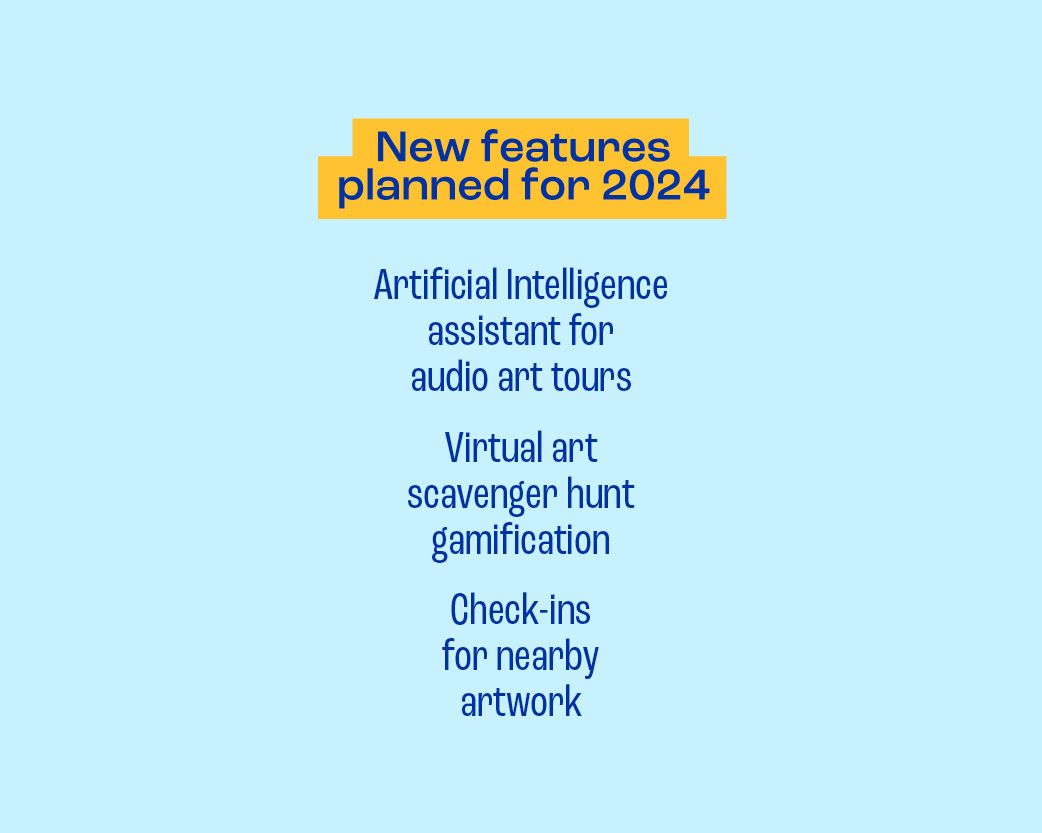
The recently installed Mathias Alten bronze sculpture by artist J. Brett Grill on the Pew Grand Rapids Campus allows for one use of this feature. App users can see Alten come to life, with an actor’s voice depicting Alten talking about his life as well as the nearby GVSU galleries that hold his work.
The development of the app has presented a prime opportunity for students to gain experiential learning by working on it through their classes, Kemler and Engelsma said. About 50 students have worked on it through the years.
Juan Mejia ‘13 worked as a graduate student on one of the major releases, a gamification feature in 2013 that, with a nod to ArtPrize, promoted interaction with the app by encouraging users to vote for their favorite pieces in the GVSU art collection, earning points and the chance for prizes.
Mejia said this work presented the first opportunity for him to code for an iPhone app as well as contribute to his master’s thesis in computer information systems. He recalled the app being a strong GVSU-related resource.
“I find it significant and interesting that GVSU cares to create an application to keep students informed and connected,” said Mejia, who now works as a software engineer for Microsoft.
Another significant app release has been the open-source release of the mobile app framework, allowing other organizations to adapt the technology to manage and publish information about their collections, Kemler said. Such technology is often prohibitively expensive and time-consuming to develop.
The Art Gallery is sharing this framework with other institutions and has had responses worldwide from those who, like the Art Gallery, use Collective Access, which is a free open-source software for managing and publishing museum and archival collections.
“Now a museum, a gallery, a library not only can have an open source, free-to-use software option for managing their collection but also a free-to-use mobile application to help share and engage that collection with their audience,” Kemler said.
Josiah Campbell ‘17 worked on the app as a student and has worked on the open-source feature as a professional. Campbell, who is a backend software engineer at Reverb.com, said he has enjoyed working on the GVSU app, which he said is consistently fresh and relevant.
“This has always been an app where we’re trying to add new features, not just because you can experience art in so many ways, but to keep it interesting, too,” Campbell said.
Engelsma, who noted open source has revolutionized the way software is developed this century, said this new feature on a specialized app created through his collaboration with Kemler has exciting potential.
“This is a substantial contribution in the open-source community,” Engelsma said. “We’re hopeful a lot of institutions will be adopting this in the months ahead, and the impact will be far greater than the Grand Valley community.”






